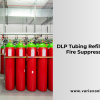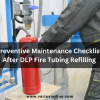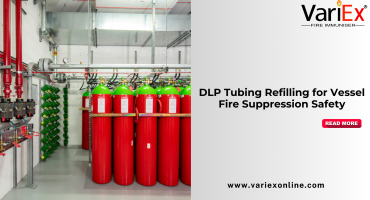![]()
Fire Immuniser
+91-7829629111
Email: info@variex.in
Varistor Technologies Pvt. Ltd.
Block-1, First Floor, Ardente Office One, Hoodi Circle, ITPL Main Road, Bengaluru, Karnataka 560048, IN
Fire Fighting System Types And Equipment
Fire fighting systems are the unsung heroes of building safety, quietly standing guard until the moment they're needed most. Let's explore these systems and the equipment they use in more detail:
1. Fire Detection Systems: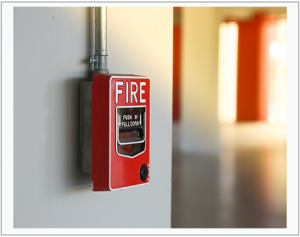
Fire detection systems are the vigilant eyes and ears of building safety. They employ various sensors to detect signs of fire, such as smoke, heat, or flames. When triggered, these sensors send signals to the central control panel, which activates alarms to alert occupants.
Types of fire detection systems include:
- Smoke Detectors: These devices sense the presence of smoke particles in the air and are available in ionization and photoelectric variants.
- Heat Detectors: Heat detectors activate when temperatures rise above a predetermined threshold, indicating the presence of fire.
- Flame Detectors: Flame detectors use specialized sensors to detect the presence of flames, providing additional confirmation of a fire event.
2. Fire Suppression Systems: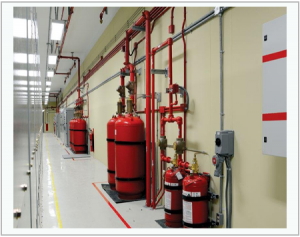
Fire suppression systems are the frontline defenders against fires, ready to spring into action at a moment's notice. They utilize various methods and agents to extinguish or control fires, preventing them from spreading and causing further damage.
Types of fire suppression systems include:
- Sprinkler Systems: Sprinkler systems are perhaps the most common type of fire suppression system. They consist of a network of pipes with sprinkler heads strategically placed throughout the building. When heat from a fire activates a sprinkler head, water is released to suppress the fire.
- Gaseous Suppression Systems: These systems use inert gases or chemical agents to extinguish fires by displacing oxygen or inhibiting the chemical reactions that sustain combustion.
- Foam Systems: Foam systems combine foam concentrate with water to create a foam blanket that suppresses flammable liquid fires by smothering the flames and cooling the fuel surface.
3. Fire Extinguishers:
Fire extinguishers are the versatile tools of fire safety, allowing occupants to intervene in the early stages of a fire. They come in various types, each designed to combat specific types of fires effectively.
Common types of fire extinguishers include:
- Water Extinguishers: Suitable for fires involving ordinary combustibles such as wood, paper, and cloth (Class A fires).
- CO2 Extinguishers: Ideal for electrical fires (Class C fires) and flammable liquid fires (Class B fires), as they displace oxygen and extinguish the fire without leaving residue.
- Dry Chemical Extinguishers: Effective for a variety of fires, including ordinary combustibles, flammable liquids, and electrical fires (Class A, B, and C fires).
4. Fire Alarm Systems:
Fire alarm systems are the vocal messengers of fire safety, alerting occupants to evacuate in the event of a fire. They consist of smoke detectors, heat detectors, alarm bells, and control panels.
Upon detecting signs of fire, the alarm system activates audible and visual alarms, warning occupants to evacuate the building immediately. Additionally, the system may transmit signals to the monitoring station or fire department to initiate emergency response procedures.
5. Passive Fire Protection Measures:
Passive fire protection measures work silently behind the scenes, containing or slowing the spread of fire and smoke within a building.
Examples of passive fire protection measures include:
- Fire-rated Doors and Partitions: These doors and partitions are constructed from fire-resistant materials and are designed to withstand the passage of fire and smoke for a specified period, allowing occupants to escape safely.
- Fire Dampers: Installed within HVAC ducts, fire dampers prevent the spread of fire and smoke through the building's ventilation system by closing automatically when triggered by heat.
- Fire-resistant Materials: Building materials such as fire-rated walls, ceilings, and floors provide additional protection against the spread of fire and smoke, compartmentalizing the building and limiting fire damage.
In summary, fire fighting systems and equipment work together seamlessly to detect, suppress, and mitigate the impact of fires in buildings and facilities. By understanding the functions and applications of each component, building owners and occupants can enhance fire safety measures and minimize the risk of fire-related incidents.
Frequently Asked Questions
A fire fighting system is a combination of equipment and procedures designed to detect, suppress, and mitigate fires in buildings and facilities. It is essential for safeguarding lives, property, and assets from the destructive effects of fires.
The main components include fire detection systems (smoke detectors, heat detectors), fire alarm systems, fire suppression systems (sprinklers, gaseous suppression systems), fire extinguishers, and passive fire protection measures (fire-rated doors, walls).
Fire detection systems use sensors to detect the presence of fire, smoke, or heat in a building. When a fire is detected, the system activates alarms to alert occupants and initiates suppression measures.
Fire suppression systems are designed to extinguish various types of fires, including Class A (ordinary combustibles), Class B (flammable liquids and gases), and Class C (electrical fires).
Fire fighting systems should undergo regular inspections, testing, and maintenance as per manufacturer recommendations and regulatory requirements. This ensures their proper functioning in the event of a fire emergency.
Final Say
We at VariEx.in or Variexonline.com have mastered the art of designing, installing, inspecting, and fixing automatic sprinkler systems with the help of our in-house team, which is capable of delivering the fire sprinkler services you need, whether large or small and at affordable cost.
To schedule a fire sprinkler installation, or you think our services could benefit your commercial property, contact us online or give us a call at, 7829629111
"WHAT YOU CAN READ NEXT"
 Read more +24 November 2023 in Fire Extinguisher
Read more +24 November 2023 in Fire ExtinguisherWhat types of fire extinguishers are available for different fire classes?
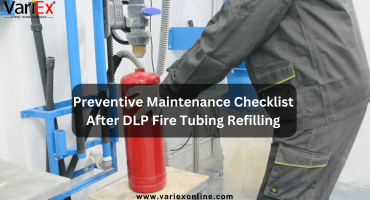 Read more +11 July 2025 in Fire Suppression
Read more +11 July 2025 in Fire Suppression

